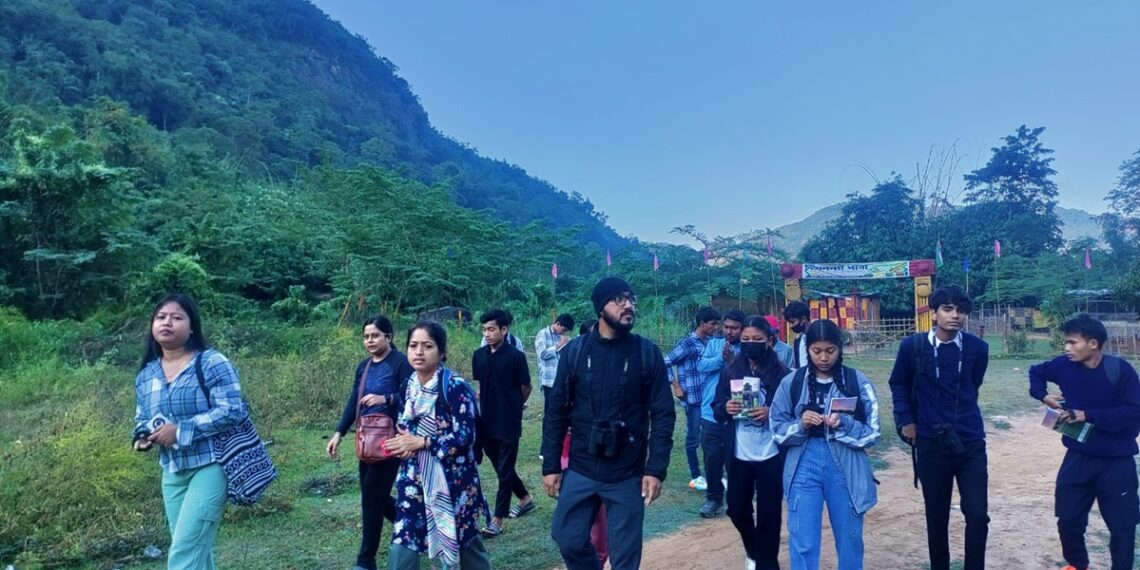GUWAHATI: In an effort to shed light on the pressing issues of deforestation, urban heat islands, and environmental challenges, an event titled “Nature’s Wonderland – a journey of curiosity” was organised at the Rani Reserve Forest in Kamrup district recently.
Supported by Wipro Foundation and LEA Associates South Asia Pvt. Ltd. (LASA), the initiative aimed to focus on forest biodiversity and its crucial role in mitigating urban challenges.
Aaranyak, the biodiversity conservation organisation behind the event, highlighted the changing landscapes globally due to rapid urbanisation.
Ten students from Rani High School, along with their faculty members Dr Prarthana Mudoi and Kakali Buragohain, participated in the event organised on Sunday.
The event sought to address the impact of population influx into cities, leading to the depletion of natural resources such as land, air, forests, rivers, streams, wetlands, and croplands.
Deforestation, the urban heat island effect, freshwater scarcity, pollution, flash floods, and climate change were highlighted as the pertinent issues affecting metropolises.
Aaranyak’s biologist, Jigyas Boruah, guided the students through the art and science of birdwatching, providing insights into the use and adjustment of binoculars.
During the journey in the reserve forest, the students had the opportunity to observe and learn about various bird species, including the Scarlet Minivet, Bronzed Drongo, Black-hooded Oriole, White-throated Kingfisher, and Black-crested Bulbul.
Aaranyak also highlighted how forests provide essential environmental services such as heat mitigation, air and noise pollution reduction, groundwater recharge, and other nature-based solutions, offering socio-economic and psychological benefits.
Nature enthusiasts also engaged in a meditation session by the Kopili stream, revitalising their spirits after the uphill climb.
A biodiversity understanding and storytelling session titled “Leaves Museum” was also conducted by Aaranyak’s Wasima Begum.
Students actively participated, arranging fallen leaves to depict the variety of flora and fauna in one instance, and crafting an outline of Lord Ganesha to emphasise the shrinking of wild habitats and the importance of human-elephant coexistence in another.















